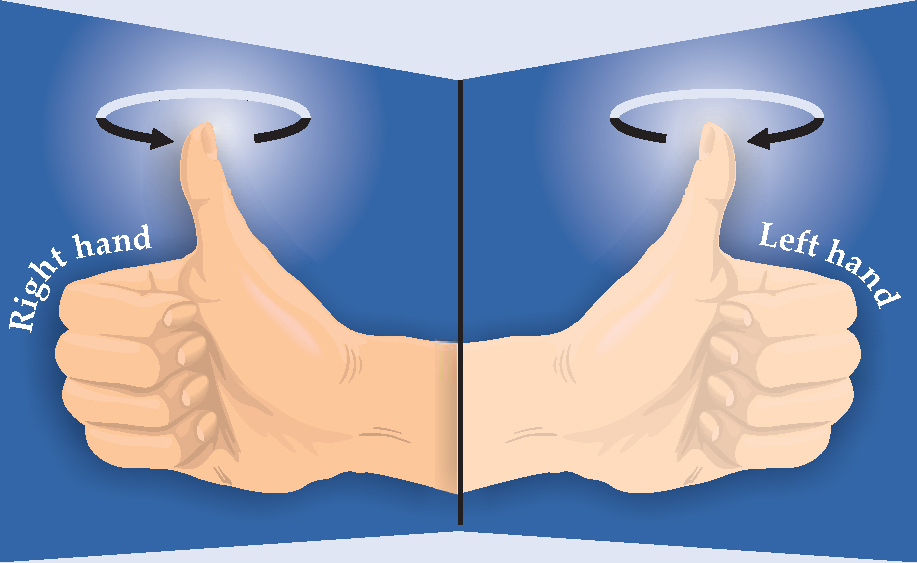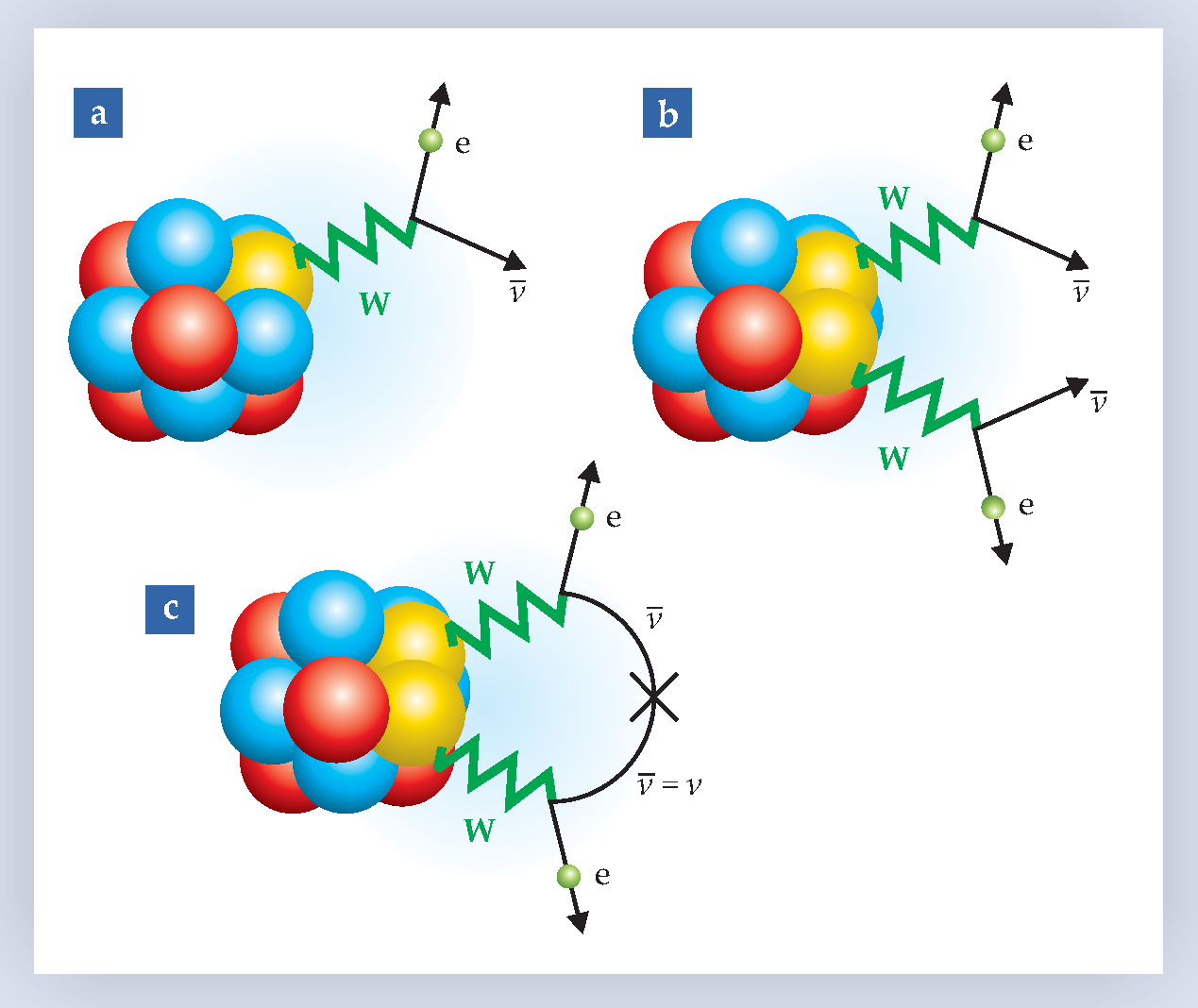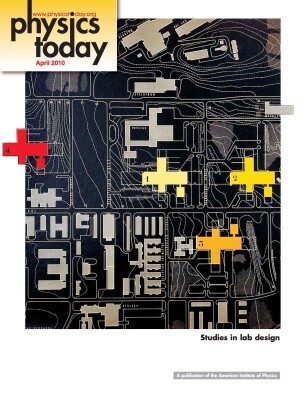Neutrino mass and the origin of matter
DOI: 10.1063/1.3397052
Unless you work in a specialized physics lab, you may never confront antimatter. All the stuff you normally deal with is made of protons, neutrons, and electrons—regular matter, not antimatter. In other respects, matter and antimatter are quite similar; so why do we encounter essentially only matter? Perhaps the universe has no cosmic matter-antimatter asymmetry, but we just happen to live in a matter neighborhood. Suppose, then, that the universe started with equal amounts of matter and antimatter. Early in its evolution, the universe’s energy was squeezed into a hot plasma in a very tiny volume. Under such conditions, reactions in the plasma would maintain matter-antimatter equality. Hence, equal amounts of matter and antimatter would be “frozen out” when the universe had expanded sufficiently that would-be colliding matter and antimatter had difficulty finding one another to annihilate. Well-understood physics allows theorists to calculate the residual amount of matter and antimatter; the calculated value falls short of the observed amount of matter by seven orders of magnitude.
Perhaps matter-antimatter asymmetry has been present since the Big Bang. That idea also does not work. The universe is widely believed to have undergone a period of exponential expansion in its early moments. That inflation would dilute away any initial asymmetry. The matter-antimatter asymmetry, it appears, must have arisen after inflation ended.
Sakharov’s conditions
In 1967 Andrei Sakharov proposed three conditions under which matter-antimatter asymmetry could arise from the laws governing microphysics. First, the laws must violate the CP (charge conjugation C and parity, or coordinate inversion, P) symmetry that takes particles to antiparticles and vice versa. Second, the laws must allow for interactions that change the number of baryons—particles such as protons and neutrons that are made of quarks. In particle physicists’ accounting, an antiparticle such as the antiproton has negative baryon number. Third, the baryon-number-violating interactions must be out of equilibrium.
To understand the last criterion, assume that a heavy particle decays to produce both particles and antiparticles but at different rates due to CP violation. If the process is in thermal equilibrium, the reverse heavy-particle production processes would erase any asymmetry. But it need not be in thermal equilibrium. In an expanding cosmos, particles may be unable to interact readily enough to maintain the equality of forward and backward reaction rates necessary to maintain equal amounts of matter and antimatter.
The standard model, which has been spectacularly successful in providing an understanding of almost all particle-physics observations, satisfies two of Sakharov’s three conditions. Thus any explanation of the matterantimatter asymmetry must incorporate physics beyond the SM. The SM incorporates CP violation, as proposed by Makoto Kobayashi and Toshihide Maskawa to explain observations such as the decay of the long-lived neutral kaons. It also, as Gerard ’t Hooft showed, allows for baryon-number-violating processes that convert antileptons to baryons and vice versa. The interactions responsible for those processes are very weak at present, but they could have been much stronger in the hot, early universe. Sakharov’s out-of-equilibrium requirement does not hold for the SM. The expansion rate of the universe at the relevant epoch depends on the mass of the Higgs boson, an as-yet unobserved particle that may soon be seen at CERN’s Large Hadron Collider (LHC). But theory requires that for baryon-number-violating processes to be out of thermal equilibrium, the Higgs boson must have a mass below 40 GeV—a result contradicted by experiment.
Neutrino mass, leptogenesis, and a seesaw
The physics responsible for neutrino mass may provide a key to resolving the puzzle of matter-antimatter asymmetry. Neutrinos play a unique role in the SM: They are the only particles that participate exclusively in weak processes such as nuclear beta decay and the hydrogen fusion that fuels the Sun. Until 1998 the consensus among particle physicists was that neutrinos are massless, whereas all other matter (for example, quarks and electrons; photons don’t count as matter) has mass. The SM accommodates the massless neutrino by insisting that all neutrinos have negative helicity as described in figure 1. Massive fermions such as the electron can have positive or negative helicity.

Figure 1. Helicity and handedness. In the standard model, the momentum and spin of a neutrino are antiparallel; the neutrino is said to have negative helicity. The figure shows why SM neutrinos are also sometimes called left-handed. Imagine that the thumb of the left hand points in the direction of momentum and the fingers curl in the direction of a spinning particle. The spin and momentum vectors will be antiparallel. For the right hand, spin and momentum are parallel; corresponding particles have positive helicity.

As early as 1974, particle theorists proposed extensions of the SM in which neutrinos had mass. In particular, left-right symmetric models include right-handed neutrinos that are parity partners of the left-handed neutrinos; the two helicities imply that the neutrinos are massive. But no experiment provided evidence for massive neutrinos until 1998, when the Super-Kamiokande collaboration published its study of neutrinos created by cosmic rays in an underground tank of water in the Kamioka mine in Japan. The Super-Kamiokande work confirmed earlier results from solarneutrino studies in the Homestake mine in the US. Many experiments since have established that the neutrino masses are less than one-billionth of a proton mass.
The minuscule neutrino mass begs to be explained. One simple explanation, appropriate for left-right symmetric theories and some others, is provided by the so-called seesaw mechanism, which fixes the product of the masses of right-and left-handed neutrinos; if a right-handed neutrino is heavy, the left-handed partner must be light. The heavy right-handed neutrinos would not be seen in experiments that observe their lighter partners.
The theory of relativity demands that a heavy right-handed neutrino be its own antiparticle. And that, as Masataka Fukugita and Tsutomu Yanagida recognized in 1986, could be key to understanding the prevalence of matter. The two observed that heavy right-handed neutrinos in the early universe would decay to both leptons and antileptons because the neutrino is its own antiparticle. If, they continued, the weak force responsible for the decay violates CP symmetry, the rates for decay into leptons and antileptons would be different, as would the resulting lepton and antilepton densities. As in the SM, the interactions identified by ’t Hooft would convert the lepton-antilepton imbalance to a baryon-antibaryon asymmetry. The mechanism described by Fukugita and Yanagida is now known as leptogenesis. Its appealing feature is that the same physics responsible for small neutrino masses also explains the matter-antimatter asymmetry.
Experimental tests of the leptogenesis idea need to examine the validity of the seesaw mechanism as the origin of neutrino masses and to explore CP violation in the forces involving neutrinos. Several groups are currently searching for neutrino-less double beta decay, which, if found, would be an important signal of the seesaw mechanism. Figure 2 illustrates the decay process. A different kind of evidence for the seesaw mechanism may be revealed at the LHC. Standard model extensions such as left-right symmetric models include a right-handed partner of the conventional Z boson. (Like the W boson of figure 2, the Z boson is an analogue of the photon.) Experiments at the LHC will look for the right-handed Z—more precisely, for its decay into two right-handed neutrinos that themselves subsequently decay with equal probability to electrons and positrons.

Figure 2. Neutrinoless double beta decay. (a) In conventional beta decay, a neutron decays into a proton (yellow), an electron (e), and an antineutrino (

The search for CP violation in neutrino interactions involves high-precision experiments that look for asymmetry between the oscillations of neutrinos and antineutrinos. In neutrino oscillation, one species of neutrino morphs into another as it flies along. Indeed, the experiments that provided the first evidence for neutrino mass involved oscillations. Two experiments that will look for CP -violating oscillations are T2K in Japan and NOvA in the US. In both experiments, high-energy neutrinos and antineutrinos traveling for hundreds of kilometers will oscillate into different species; differing oscillation rates for neutrinos and antineutrinos would be evidence of CP violation. The T2K and NOvA experiments will study conventional SM neutrinos, not the proposed heavy neutrinos responsible for leptogenesis. But the seesaw mechanism implies that if conventional neutrinos violate CP , so will heavy neutrinos. Thus observation of CP violation for the familiar SM neutrinos would provide evidence for an essential ingredient of leptogenesis. Stay tuned: In late February T2K reported that they had tracked their first neutrino as it traveled from Tokai to Kamioka.
References
1. H. R. Quinn, “The Asymmetry Between Matter and Antimatter,” Physics Today, February 2003, p. 30.
2. R. N. Mohapatra, A. Y. Smirnov, “Neutrino Mass and New Physics,” Annu. Rev. Nucl. Part. Sci. 56, 569 (2006).
3. S. Davidson, E. Nardi, Y. Nir, “Leptogenesis,” Phys. Rep. 466, 105 (2008).
More about the Authors
Rabi Mohapatra is a professor of physics at the University of Maryland, College Park.
Rabindra N. Mohapatra. University of Maryland, College Park, US .
